Journal #4: New Things
by Miles Raymer
It’s been two weeks since I returned to Humboldt, and I’ve been fortunate to accomplish a few new things. My experience at OAEC left me chomping at the bit to start practicing some permacultural methods, and while I realize this is a lifelong endeavor, I’m pleased to be able to start turning several small projects into reality. One of my first ambitions after returning home was to gain some experience working on a local farm in Humboldt, and I was able to acquire a weekly internship at Tule Fog Farm in Arcata. This farm is run by Sean and Shail, two long-time family friends and permacultural practictioners. I couldn’t have asked for a better gig. Tule Fog, which has been going for about five years, exudes a sense of natural growth that is modest but also potentially limitless. Their house is painted bright yellow with a hot pink trim that works much better than it has a right to. The small yard is brimming with ongoing projects that are gradually bringing new life to previously barren lawn space.
While Tule Fog seems to produce plenty of fruits and veggies, their main product is meat. Sean and Shail use a grazing model called intensive rotation, which I first learned about from the works of Joel Salatin, a Virginian farmer who popularized the method. The method employs portable electrified fencing to limit the space on which the animals can graze, thereby maintaining the diversity and health of grass species that often disappear when animals are left to graze an entire pasture for too long. It’s a lot of labor to move the fences every day, but the method pays off by protecting the grasses from exhaustion and allowing the soil to regenerate itself after being fertilized by animal waste, ultimately producing a superior meat product while simultaneously enriching the land instead of robbing it of nutrients. Tule Fog has cows, goats, and lots of pigs, all of which seem happy as can be when the fences start to move, jostling each other to get to the new, untouched grass. They also raise turkeys, chickens, geese, and a small number of ducks. I’ve learned lots of new things in my first two days working with Sean and Shail, including how to milk a goat and a cow. I am truly thankful for the opportunity to work at a farm that has clearly been designed with the principles of permaculture in mind.
On the home front, I’ve been getting lots of little things done. Last Friday, my friend John took me up into the hills above our neighborhood to go mushroom hunting. I’ll confess that in the past I’ve bought into the rather unjust notion that mushroomers are an awkward and slightly cultish bunch, but after just one trip I completely understand how people get so hooked on it. The feeling of going for a long hike and coming home with one or more meals in a basket is both exhilarating and pacifying. John was very patient about teaching me the basics of mushroom identification, most of which I promptly forgot in my raw excitement. We found a large number of chanterelles, which I find pleasing to the eye but even more so to the tongue! It was a delightful foray into what I can tell is a complex and fascinating world, and I’m looking forward to going again soon.
A few days later, I planted a small winter garden of lettuce, chard, and kale. Even though I grew up working for Ma in the garden, I never really participated in the actual growing and cultivation of plants. She always wanted me to do the harder stuff, like digging and hauling and cutting back. So, strangely enough, this week was the first time since elementary school that I can remember actually planting something that I intend to care for and eventually harvest. Ma gave me good instructions, but I undertook the process by myself. I picked out the starts at the local garden shop––three varieties of lettuce, plus the only chard and kale starts they had available. Before planting them, I massaged the soil as I’d learned to do at OAEC, breaking up the big chunks and checking for consistency and wetness. I drew out five evenly spaced lines and made small holes, staggering them from row to row so the plants wouldn’t be in a perfect grid. Then I planted the lettuce on the southern side of the bed (they will be the shortest plants when they mature), the kale on the northern side (they will eventually be the tallest), and the chard in the middle. I interplanted the different varieties of lettuce instead of putting all of the same species together, mostly for aesthetic reasons. When all the starts were in, I spread a small amount of compost between the rows, and then covered the bed with rice straw, which will help keep moisture in the soil and prevent weeds from sprouting.
All in all, I was happy with how it turned out. But more than that, I was amazed at how the process affected my overall demeanor. If you don’t know me, I think it’s fair to say that I’m not a very nurturing person. I have a tendency to be blunt and often have to put extra effort into understanding the perspectives of others. But putting these little beings into the earth brought out in me a sense of calm and a desire to nurture that I’ve never felt before toward plants. I think I’ve always had reverence and respect for plants, but I’m just starting to discover what it is to feel responsible for them. It makes me excited to eventually grow from seed instead of buying starts, which seems like a much more intimate experience. As far as this small winter garden goes, I’ll try to strike a balance between action and inaction; after all, plants know how to do their thing all by themselves. I think my role is just to relax and observe to make sure everything is going the way nature intended. It has been a few days now, and the plants seem healthy.
The last new thing I’ve done recently is set up our new worm farm. Ma bought a kit a while back, so it wasn’t too difficult to follow the instructions and get everything prepared. When the worms finally arrived in the mail, I was surprised as how excited I was. It felt childlike and simple, in the best way. The worms have only been here for a day, but I’m keeping a close eye on them as they adjust to their new environment. I’m looking forward to taking care of these little guys and using their castings to nourish my garden down the road.
Well, that’s all for now. It’s good to be home, and I’m pleased with what little progress I’ve been able to achieve. Looking ahead, I’m about to dive into my new botany book, so hopefully I’ll soon be on the path to better ecological literacy!
Next weekend Jessie and I are visiting some friends in San Francisco, so it will probably be two weeks until my next update.
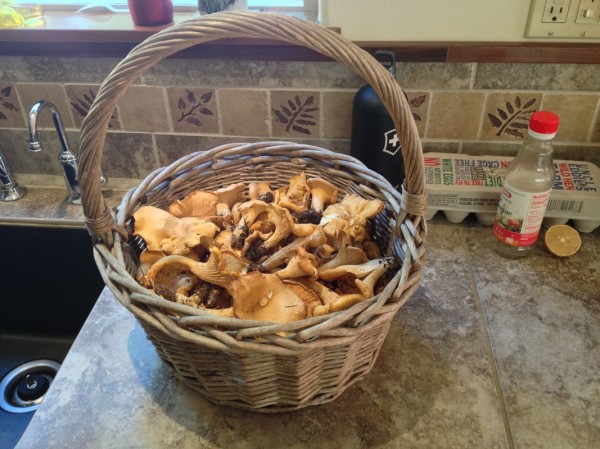
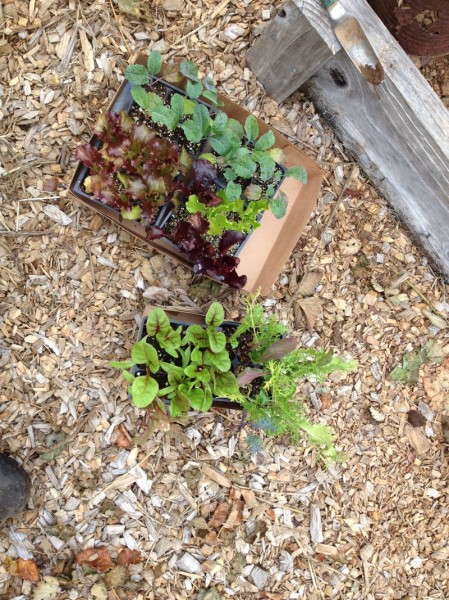
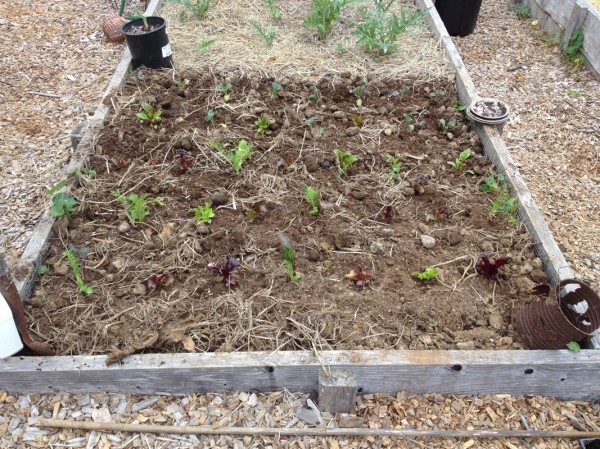
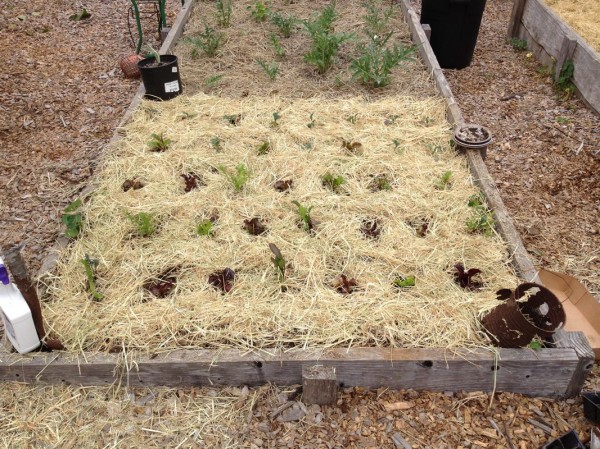
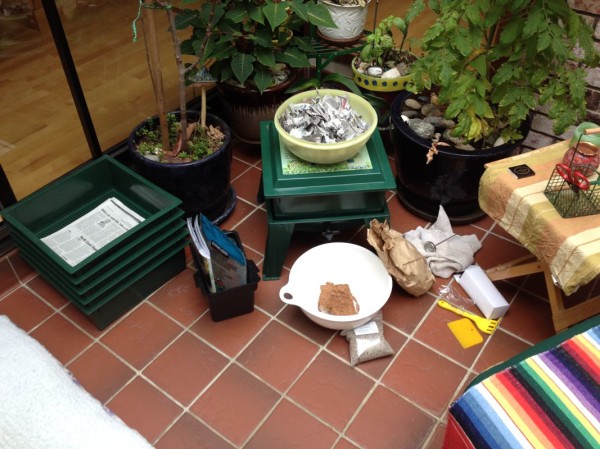
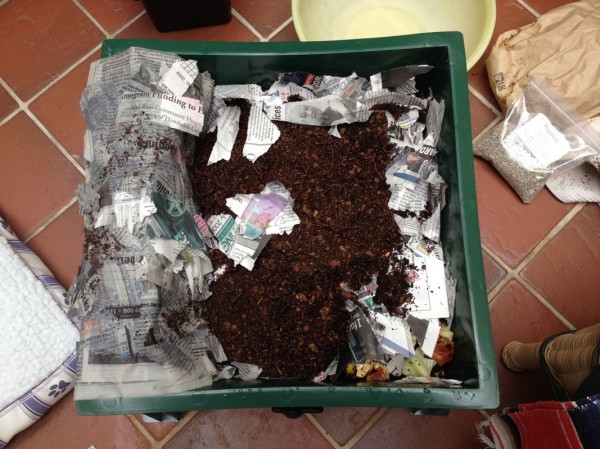
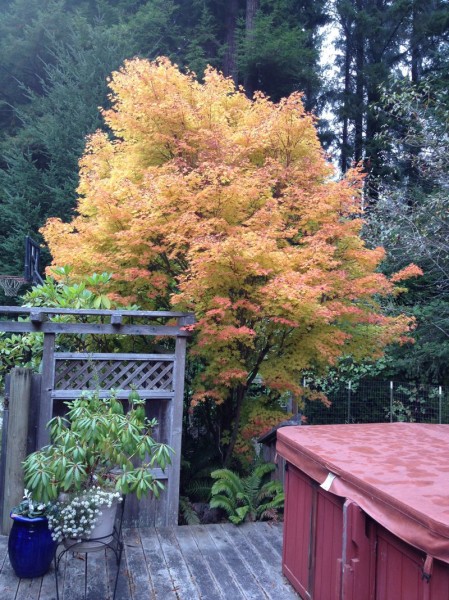
[…] has not turned out the way I envisioned when I first planted those little starts in October (see Journal #4). Even though I knew I didn’t really know what I was doing, I still clung to a boundless, […]